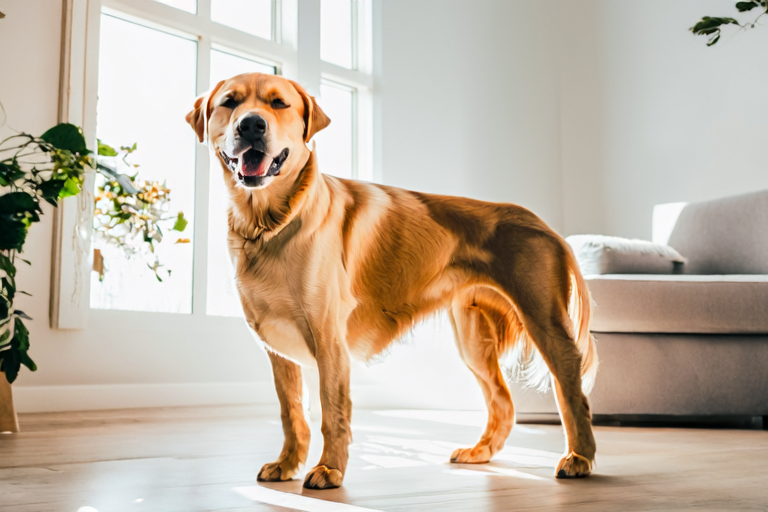The Ultimate Guide to Labrador Training Tips
Introduction:
Welcome to the ultimate guide to Labrador training tips! This comprehensive guide will cover everything you need to know about training your Labrador, from basic obedience training to socialization techniques and behavior correction methods. We’ll also provide age-specific training strategies, emphasize the use of positive reinforcement, and offer practical home training plans and solutions for common problems. With expert advice and scientific research backing our recommendations, this guide is designed to help you raise a well-behaved and happy Labrador.
Basic Obedience Training
Step 1: Establishing a Routine
The first step in training your Labrador is to establish a consistent routine. Dogs thrive on structure, and having a set schedule for meals, walks, and playtime can help your dog feel more secure and confident. According to Dr. Ian Dunbar, a renowned animal behaviorist, “Dogs are creatures of habit, and they find comfort in predictability.” A predictable routine can also help reduce anxiety and unwanted behaviors.
Step 2: Teaching Basic Commands
Once you have established a routine, it’s time to teach your Labrador some basic commands. Start with simple commands like “sit,” “stay,” “come,” and “leave it.” Use treats as rewards when your dog follows the command correctly. Positive reinforcement is key to successful training. As Dr. Karen Overall, an expert in animal behavior, states, “Positive reinforcement is one of the most effective ways to train dogs because it builds trust and strengthens the bond between you and your pet.”
Step 3: Consistency is Key
Consistency is crucial when training your Labrador. Make sure everyone in the household uses the same commands and reinforces good behavior in the same way. Inconsistency can lead to confusion and frustration for both you and your dog. As Dr. Patricia McConnell, a certified applied animal behaviorist, notes, “Consistency helps your dog understand what is expected of them, leading to better behavior over time.”
Socialization Techniques
Importance of Socialization
Socializing your Labrador is essential for their emotional and behavioral development. Proper socialization can help prevent aggression, fear, and anxiety in your dog. It’s important to expose your Labrador to different people, animals, environments, and situations during their critical socialization period, which typically occurs between 3 and 14 weeks of age. Dr. Sophia Yin, a veterinarian and animal behaviorist, emphasizes that “Early socialization plays a crucial role in shaping your dog’s temperament and behavior.”
Techniques for Socialization
To effectively socialize your Labrador, consider the following techniques:
- Expose your dog to different people, including children, adults, and individuals with disabilities.
- Introduce your dog to other animals, such as cats and other dogs, under controlled circumstances.
- Take your dog to various environments, such as parks, beaches, and pet stores.
- Use positive reinforcement to reward calm and friendly behavior during social interactions.
Behavior Correction Methods
Even with proper training and socialization, your Labrador may exhibit unwanted behaviors at times. Here are some effective behavior correction methods:
- Redirect your dog’s attention to a more appropriate activity when they engage in unwanted behavior.
- Ignore minor misbehaviors, as giving attention to them may reinforce the behavior.
- Use time-outs to remove your dog from the situation if they become overly excited or aggressive.
- Consult with a professional trainer or behaviorist if your dog’s behavior is persistent or severe.
Age-Specific Training Strategies
Puppy Stage (0-6 months)
During the puppy stage, focus on basic obedience training, housebreaking, and socialization. Puppies have short attention spans, so keep training sessions short and fun. Positive reinforcement, such as treats and praise, can be very effective during this stage. Dr. Marty Becker, a veterinarian and author, advises, “Puppies learn best through play and positive reinforcement. Keep training sessions short and enjoyable to maintain your puppy’s interest.”
Young Adult Stage (6-18 months)
In the young adult stage, your Labrador may start to test boundaries and challenge your authority. This is a crucial time to reinforce basic commands and introduce more advanced training, such as agility or scent work. Consistency and patience are key during this stage. As Dr. Ian Dunbar explains, “Young adult dogs are often full of energy and may require more challenging activities to keep them engaged and focused.”
Senior Stage (7 years and older)
As your Labrador enters the senior stage, their physical abilities may decline, and they may become more sensitive to pain or discomfort. Adjust your training approach accordingly by focusing on gentle exercises and mental stimulation. Positive reinforcement remains effective, but be mindful of your dog’s limitations. Dr. Sophia Yin suggests, “Senior dogs still benefit from mental stimulation and positive reinforcement. However, it’s important to adapt your training to accommodate their changing needs.”
Practical Home Training Plans
Daily Training Schedule
Create a daily training schedule that includes short, frequent training sessions throughout the day. This can help reinforce good behavior and prevent boredom. For example, you might have three 10-minute training sessions each day, followed by playtime or a walk. Dr. Ian Dunbar recommends, “Short, frequent training sessions are more effective than long, infrequent ones. They help keep your dog engaged and focused.”
Problem-Solving Solutions
